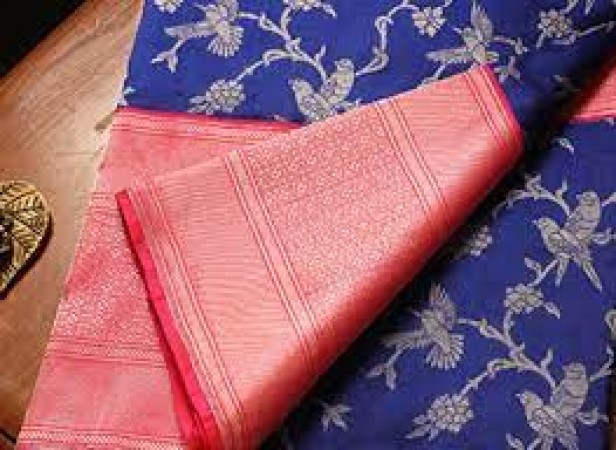
The sartorial world of India is marked by a remarkable diversity that echoes the vibrancy of its culture and history. Among its iconic contributions to global fashion, the Banarasi Saree stands out as a symbol of opulence, elegance, and rich tradition. Synonymous with grandeur, the Banarasi saree is a key facet of the Swadeshi movement, symbolizing the confluence of evolution and tradition. But what makes these sarees so special, and how did they evolve over the centuries?
The Uniqueness of Banarasi Sarees
Material and Design
Crafted meticulously with silk, cotton, and sometimes zari, Banarasi sarees boast intricate designs and patterns inspired by Persian motifs. The traditional motifs of flowers, leaves, vines, and more recently, geometric patterns, lend an air of timeless elegance to these sarees.
Process of Creation
The creation of a single saree involves intensive craftsmanship and can take anywhere from 15 days to six months, depending on the complexity of the design.
The Rich History of Banarasi Sarees
Ancient Beginnings
The art of weaving Banarasi sarees can be traced back to the ancient city of Varanasi, one of the oldest inhabited cities in the world.
Influence of Mughal Era
The art form reached its pinnacle during the Mughal era when Persian motifs began to be incorporated into the traditional Indian designs.
Banarasi Sarees in Modern Times
Contemporary Designs
Today, these sarees have embraced modern aesthetics without compromising on their traditional appeal. Their contemporary designs make them suitable for a variety of occasions.
Bridal Preference
A Banarasi saree is often the first choice for Indian brides, considered a perfect blend of traditional elegance and modern style.
Swadeshi Movement and Banarasi Sarees
Role in Freedom Struggle
The Swadeshi movement emphasized the importance of indigenous industries, including the weaving of Banarasi sarees, as a way to resist British goods during the Indian freedom struggle.
Revival and Recognition
In recent years, the government has taken several steps to protect and promote the traditional weaving industry, resulting in a revival of interest in these sarees.
The Evolution of Banarasi Sarees
From their ancient beginnings to their modern renditions, Banarasi sarees have evolved while retaining their unique identity. Modern weaving technologies have expanded the possibilities of design, and the use of different materials has allowed for a greater variety of patterns and textures.
Preserving Tradition: Challenges and Measures
Despite their popularity, the traditional Banarasi saree industry faces several challenges. Efforts are being made to preserve the art and protect the rights of the weavers, who are the heart of this tradition.
Banarasi Sarees: A Fashion Statement across Borders
In today's globalized world, Banarasi sarees have crossed Indian borders, becoming a fashion statement among celebrities and fashion enthusiasts worldwide. Swadeshi Banarasi sarees epitomize the essence of India - a country that holds onto its rich traditions while embracing change and evolution. The journey of Banarasi sarees is a testament to this unique amalgamation of heritage and modernity.
Josephine Chaplin, Actor and Daughter of Charlie Chaplin no more!
Govt Action Looms for Twitter after Viral Video of Manipur Women Paraded Naked
Manipur Unrest: CM Urges Thorough Probe into Viral Video's Authenticity